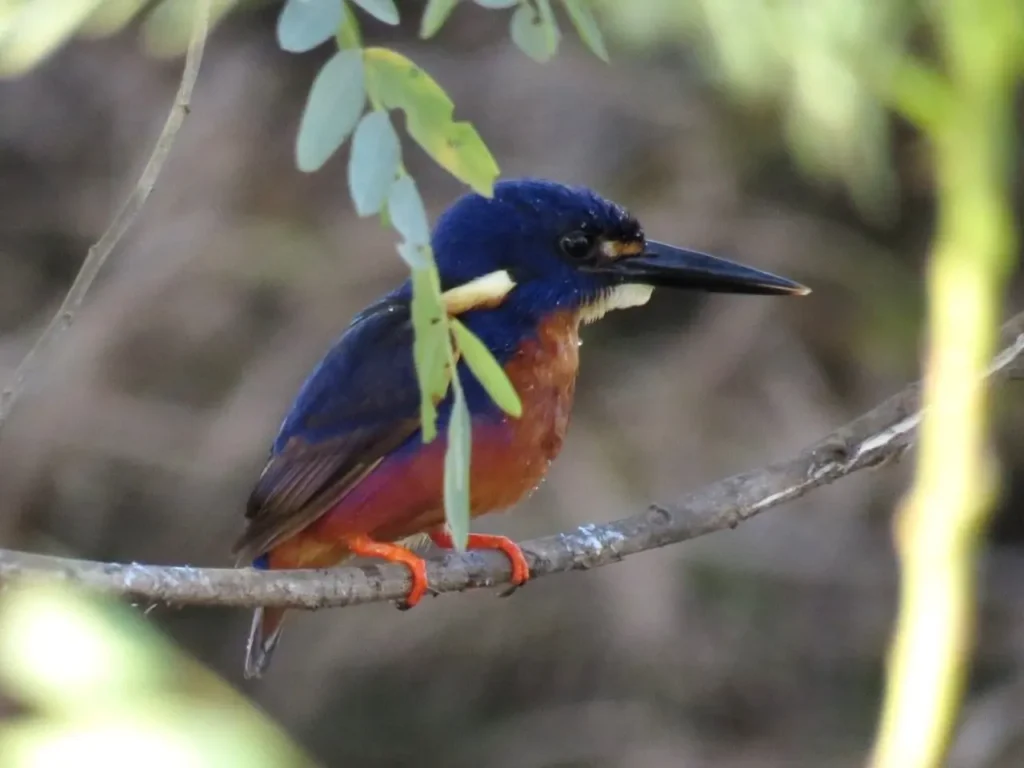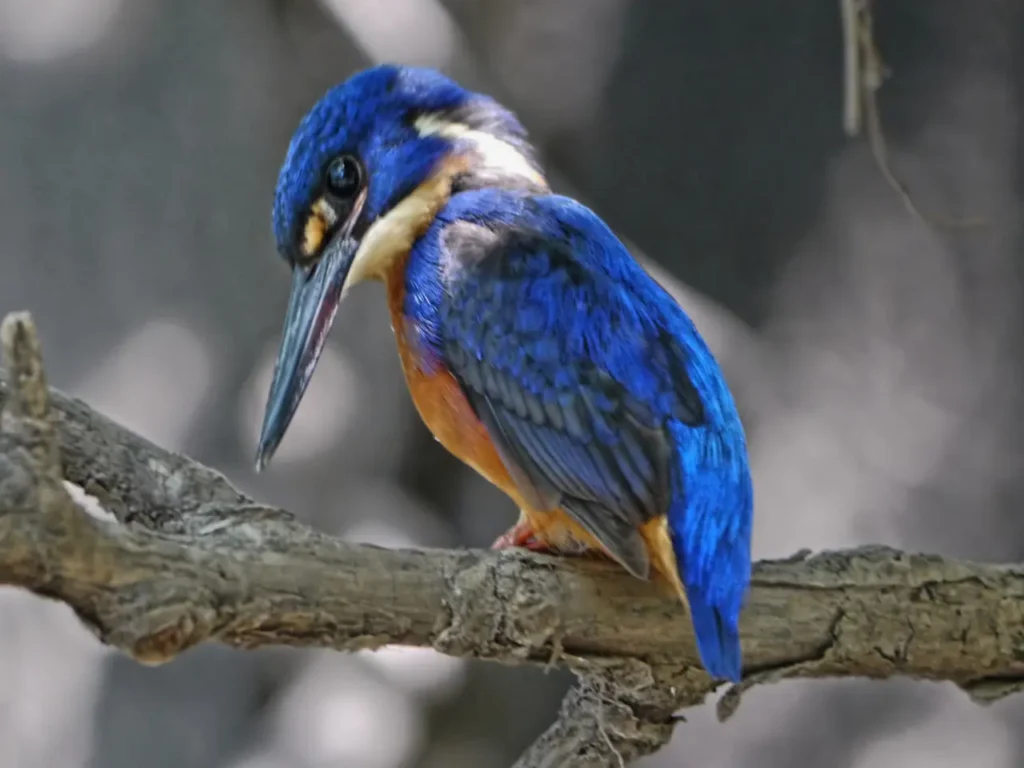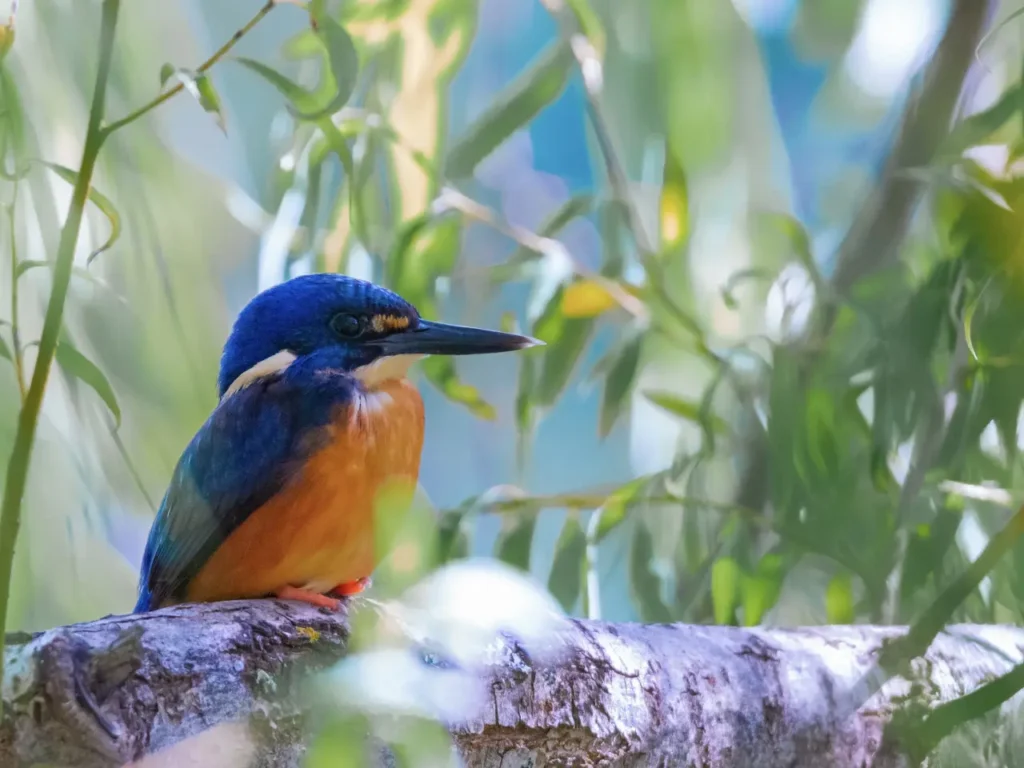The Azure Kingfisher (Alcedo azurea) is one of the most beautiful and colorful bird species in the world. With its stunning blue plumage and agile hunting skills, this remarkable bird captures the hearts of birdwatchers and nature enthusiasts alike. Join us on a journey to explore the captivating world of the Azure Kingfisher and discover why it is considered the jewel of the waterways.
Azure Kingfisher iamges



















Facts about Azure Kingfisher
The Azure Kingfisher is a small, yet dazzling bird, measuring around 17 centimeters (6.7 inches) in length. Its striking blue feathers, ranging from vibrant azure to deep sapphire, create a mesmerizing display of color as it perches gracefully on overhanging branches or darts through the air with remarkable agility. This jewel-like appearance makes it one of the most visually captivating kingfisher species in the avian kingdom.
Endemic to Australia, the Azure Kingfisher can be found near freshwater habitats such as rivers, streams, lakes, and coastal wetlands. It favors areas with clear, slow-flowing or still water, which provide an ideal environment for its hunting endeavors. With its keen eyesight and swift flight, the Azure Kingfisher is a masterful hunter, preying on small fish, crustaceans, insects, and aquatic invertebrates.
One of the most fascinating behaviors of the Azure Kingfisher is its hunting technique. It perches on a high vantage point near the water, patiently observing its surroundings. Once it spots its prey, it dives headfirst into the water, emerging with remarkable precision and accuracy. It then returns to its perch to devour its catch, often banging it against the branch to ensure it is properly positioned for consumption.
During the breeding season, which typically occurs between September and February, the Azure Kingfisher engages in courtship displays to attract a mate. Males perform elaborate aerial displays, showcasing their vibrant plumage and vocalizing to establish their territory and attract females. Once a pair bonds, they construct a burrow into the sandy banks near water bodies, where the female lays her clutch of eggs.
The Azure Kingfisher’s nest is an intricate tunnel, dug using their beaks and feet, providing a safe and secure environment for incubation. Both parents take turns incubating the eggs and caring for the hatchlings. After around three weeks, the chicks emerge, blind and featherless, relying on their parents for nourishment and protection. As they grow, their feathers develop, gradually revealing the vibrant blue hues that characterize the adult plumage.
Despite their small size and captivating beauty, Azure Kingfishers face various conservation challenges. Habitat degradation, pollution, and disturbance from human activities pose threats to their population. Conservation efforts focus on protecting and restoring their freshwater habitats, raising awareness about their importance in the ecosystem, and promoting responsible tourism practices.
Encountering an Azure Kingfisher in the wild is a true delight, as its vibrant blue plumage flashes through the foliage and its distinct calls echo across the waterways. Its presence serves as a reminder of the incredible diversity and natural wonders that Australia has to offer. By appreciating and conserving the Azure Kingfisher and its habitat, we contribute to the preservation of these mesmerizing birds for future generations to enjoy.
The Azure Kingfisher, with its brilliant blue feathers and remarkable hunting abilities, holds a special place in the hearts of bird lovers and nature enthusiasts. Let us cherish and protect this jewel of the waterways, ensuring that its vibrant presence continues to grace Australia’s freshwater habitats for years to come.